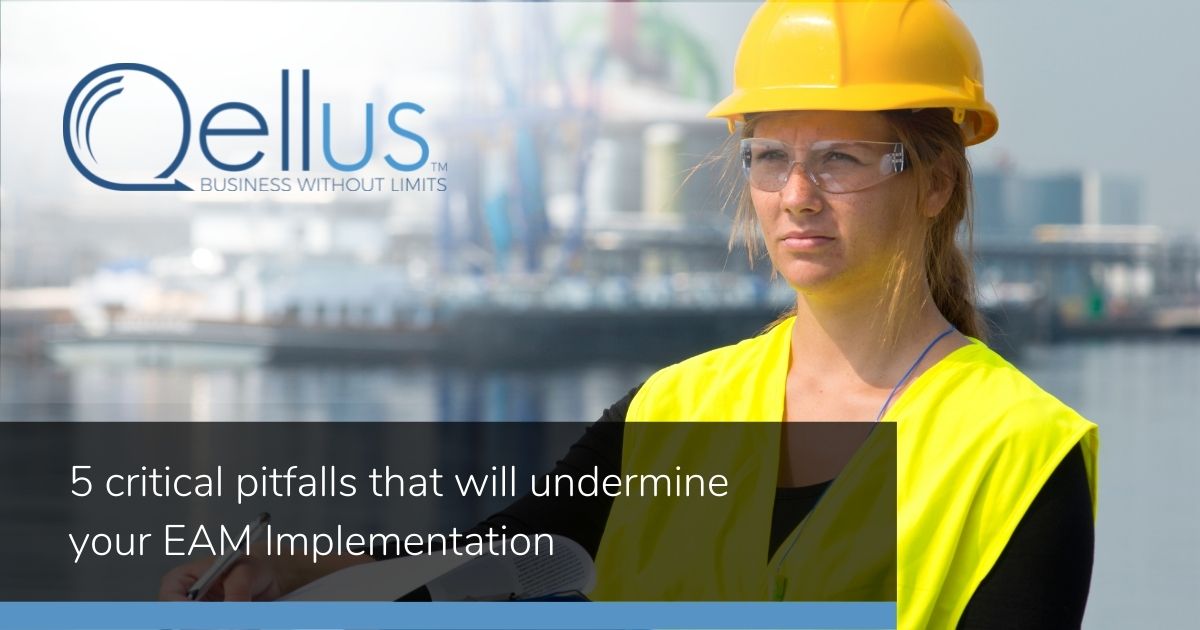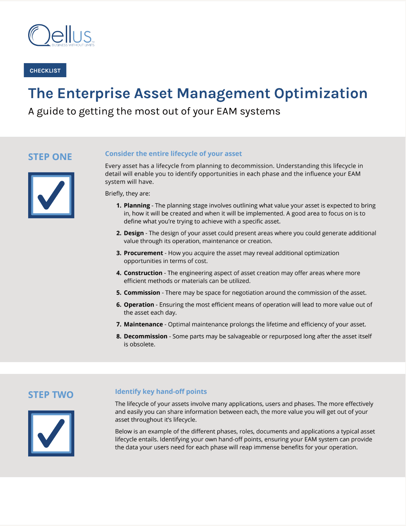5 Critical Pitfalls that will undermine your EAM Implementation

EAM systems are expensive, so it’s natural that you want to see a return on your substantial investment; the last thing you want is for that money to go to waste. The reality for a lot of asset-intensive organizations is that they fail to address the many pitfalls of EAM implementation and end up wasting vast amounts of money. Are you planning for a successful EAM system? Read this blog to find out and avoid the 5 critical pitfalls that undermine EAM implementation.
Why are EAM systems essential?
EAM systems manage the data and information representation of physical assets. Essentially, these systems organize and optimize asset operations to streamline work activities and maintenance. These operations then help you make better decisions with greater insight.
However, there are critical pitfalls that might sink your implementation of EAM systems.
5 critical pitfalls
No master data management plan
Many companies don’t understand how the many modules interact and don’t include Master Data Management in their implementation plan. Without one, your EAM system will just cost a vast amount of money with little to no payoff.
Smart codes, logical asset hierarchies, naming conventions, and other data plans ensure a scalable and sustainable EAM system that can generate insightful analysis and reports. This ensures your EAM grows with your company and doesn’t become obsolete.
Inability of EAM system to adequately support documents and drawings
EAM applications are designed to manage assets, not content. As such, they usually have a very basic means of “attaching” documents. In today’s documentation and content intensive world, integration with content management systems is the only way to ensure robust documentation within and between applications.
Document management can boost productivity and help ensure safety throughout your organization. Thus, you have to ensure that your EAM system of choice is prepared to support your document needs with planful cross functional integrations and ease of use.
Disjointed processes across the asset lifecycle
Many companies focus on the initial deployment of EAM at their facility as if it is static from that point forward. EAM systems and assets have a lifecycle that will naturally come to an end. Preparing for this transition is essential to a successful EAM implementation.
The lack of processes and discipline around the commissioning, operating, and decommissioning of assets, locations, and plans create another pitfall for many deployments. Sparing some forethought about this process, including business objectives and critical process hand-offs, will help you implement an effective and productive EAM system.
Lack of executive sponsorship and realistic implementation timeline
EAM implementation is a serious undertaking that requires forethought and planning. You have to account for how you will deal with specifics such as data standards and how to handle content management.
Getting the buy-in and support from executive management and presenting a practical plan of action is the first step to securing your EAM implementation. Due to this, you need a realistic program implementation timeline that will guide you and your team in ensuring your implementation is successful as well as ensuring the confidence of the executive team.
Lack of EAM system standardization across operations and support functions
Standardizing the use of your EAM system and support functions assists with smooth and efficient operations. Conversely, a lack of standardization leads to a dangerous and confusing operation, wrought with delays and risk. In effect, your EAM system could cause more trouble than convenience.
Ideally, companies will utilize a robust document management system during the entire asset lifecycle. This will ensure that engineering, construction, procurement, commissioning, regulatory and even decommissioning documentation is available across the entire asset lifecycle.
How to avoid the pitfalls
Obviously, there is more that can go wrong other than the pitfalls mentioned above. However, there is a lot that can go right if you follow the suggested courses of action for the above-mentioned pitfalls.
Essentially, here are key points to remember:
- Gain an understanding of how your modules interact with each other and how your EAM system fits in.
- Ensure that your EAM system of choice is prepared to support documents and drawings.
- Know and understand the needs across the entire asset lifecycle.
- Standardize the use of your EAM system.
- Get buy-in from executives with a practical, realistic plan.
And lastly, these things will not be implemented correctly without ongoing training and the development of a sound implementation plan.
In conclusion
EAM systems are difficult and expensive - so misusing them or failing to implement them is a mistake that can negate the substantial investment into the platform. Properly implemented Enterprise Asset Management solutions can transform a business from struggling under the weight of asset administration to smoothly managing their work quickly and efficiently with optimized operations.
We understand that you may not have the time, resources, or knowledge to get the most out of your EAM system once it’s installed - after all, you’re running your business full time! Let us do the hard work for you. We’ll show you the best practices and get your EAM systems set up, ready, and working towards your organizational goals while avoiding any potential roadblocks, like the pitfalls above.
Contact us today to discuss your needs and show you the way forward with effective and efficient solutions.
The 2022 Enterprise Asset Management Optimization Checklist
By downloading this checklist you will learn how to evaluate your assets, determine where you can gain value and how you can improve that value in five easy steps.

